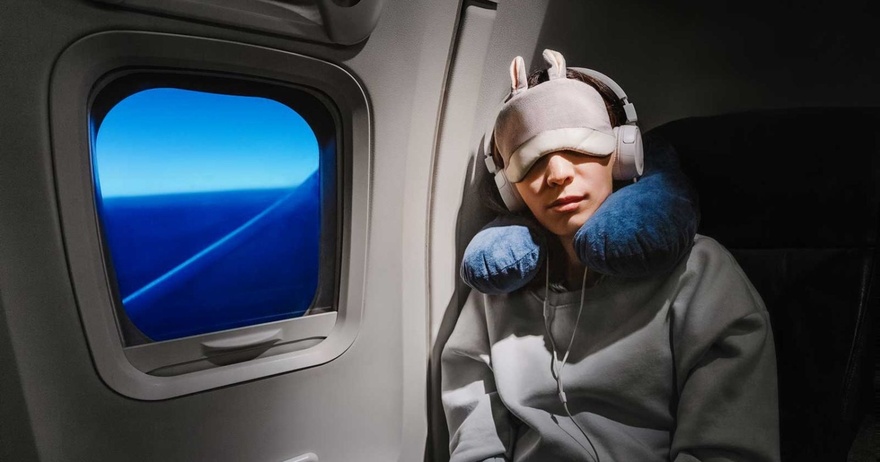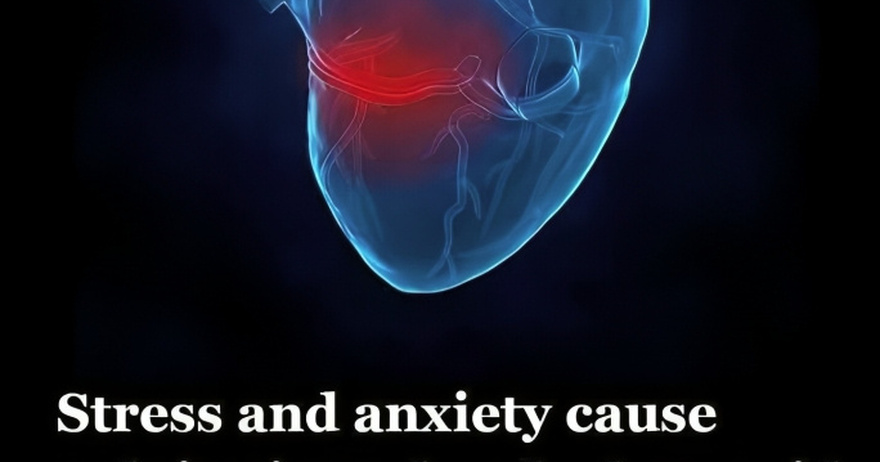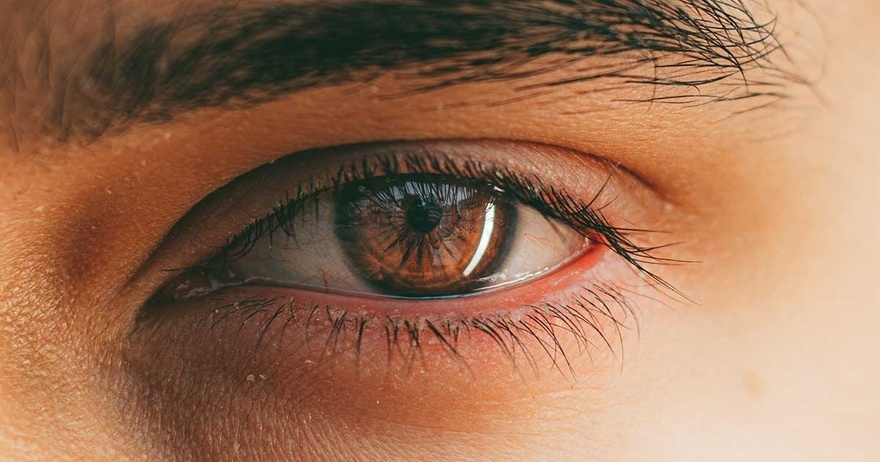Jet lag is a common and frustrating experience for travelers crossing multiple time zones. The disorientation, fatigue, irritability, and digestive issues that accompany jet lag can turn a well-deserved vacation or important business trip into an exhausting ordeal. While traditional remedies like staying hydrated, getting some rest, and avoiding caffeine and alcohol can help, they don’t tackle jet lag at its core. The real key to minimizing jet lag lies in understanding and managing light exposure, as well as timing your sleep patterns to align with your destination’s time zone.
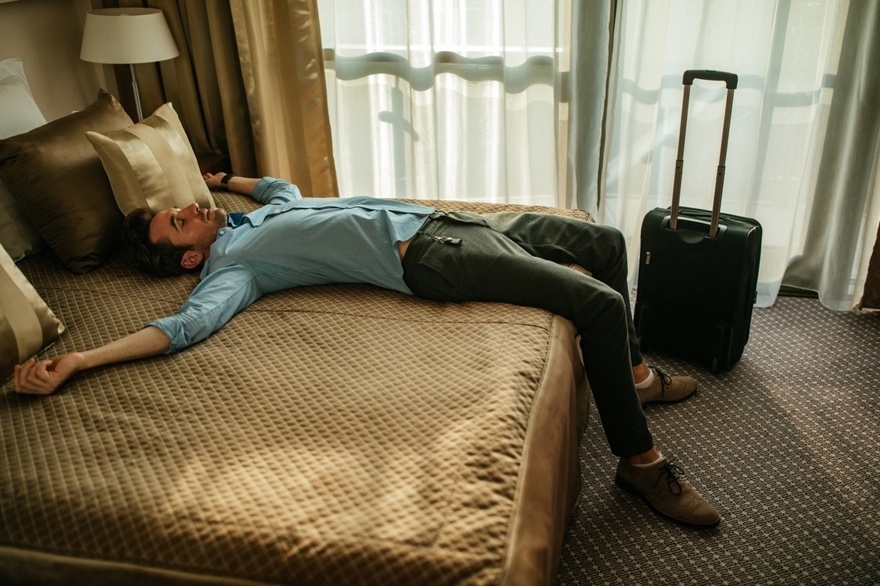
What Causes Jet Lag?
Jet lag is a temporary sleep disorder that occurs when a person’s internal body clock, or circadian rhythm, is out of sync with the time zone they are in. This happens when you travel rapidly across multiple time zones, typically by airplane. Here’s how it works:
1. Disruption of the Circadian Rhythm:
- Circadian Rhythm: Your body has an internal clock that follows a roughly 24-hour cycle, regulating sleep, wakefulness, hunger, hormone release, and other bodily functions.
- Light Exposure: Light is the primary cue that sets your circadian rhythm. When you travel to a different time zone, the local time for daylight and darkness is different from what your body is used to, confusing your internal clock.
2. Mismatch Between Internal Clock and Local Time:
- Time Zone Differences: When you cross multiple time zones, your body’s internal clock may still be set to your original time zone, making it difficult to adjust to the new time. For example, you might feel wide awake at night or extremely tired during the day in the new location.
3. Sleep Disruption:
- Difficulty Falling Asleep: Your body might want to sleep according to the time zone of your departure location, rather than the local time at your destination.
- Interrupted Sleep: Even if you do manage to sleep, the quality might be poor, leading to further fatigue.
4. Biological and Environmental Factors:
- Age: Older adults often experience more severe jet lag.
- Direction of Travel: Traveling eastward tends to cause more severe jet lag than traveling westward because it is easier for most people to stay up later than to go to bed earlier.
- Time of Travel: Overnight flights or flights that require you to sleep on the plane can contribute to jet lag.
5. Hormonal Changes:
- Melatonin: This hormone helps regulate sleep-wake cycles. Jet lag can affect the production and timing of melatonin release, leading to difficulty in falling asleep or staying awake at appropriate times.
6. Fatigue and Stress:
- Travel Stress: The stress of travel, including the discomfort of sitting for long periods, changes in cabin pressure, and dehydration, can also exacerbate the symptoms of jet lag.

How to Modify Light Exposure to Minimize Jet Lag
Adjusting your light exposure before and during your trip can help realign your circadian rhythm with your destination’s time zone. Here’s how to make the transition smoother:
1. Pre-Trip Adjustment
Start adjusting your internal clock a few days before your departure. It typically takes about one to one and a half days to shift your circadian rhythm by one hour. For a more effective adjustment:
- Determine Time Difference: Calculate the time difference between your current location and your destination.
- Gradual Shift: If you are traveling east (e.g., New York to London), start waking up and going to bed earlier by 30 minutes to an hour each day. If traveling west (e.g., London to New York), gradually shift your schedule to wake up and go to bed later.
- Light Exposure: When adjusting your schedule, ensure you get exposure to bright light in the morning if you’re shifting earlier. For those shifting later, try to expose yourself to evening light.
2. On the Plane
Managing light exposure during your flight can help synchronize your internal clock with your destination’s time zone. Here’s how to do it effectively:
- Eastbound Travel:
- Stay Awake: Try to stay awake during the flight if you’re heading east. This will help you build up sleep pressure, making it easier to fall asleep at the correct time upon arrival.
- Light Exposure: Expose yourself to natural light as much as possible during the flight. If it’s dark outside, use your phone, tablet, or laptop to get some blue light exposure. Alternatively, use blue light glasses to simulate daylight.
- Westbound Travel:
- Sleep on the Plane: Try to sleep on the plane if you’re traveling west. This will help reduce your sleep pressure and make it easier to stay awake until the local bedtime at your destination.
- Avoid Light Exposure: Use an eye mask to block out light and help signal to your brain that it’s time to rest. Expose yourself to blue light devices during the flight if it’s daytime at your destination.
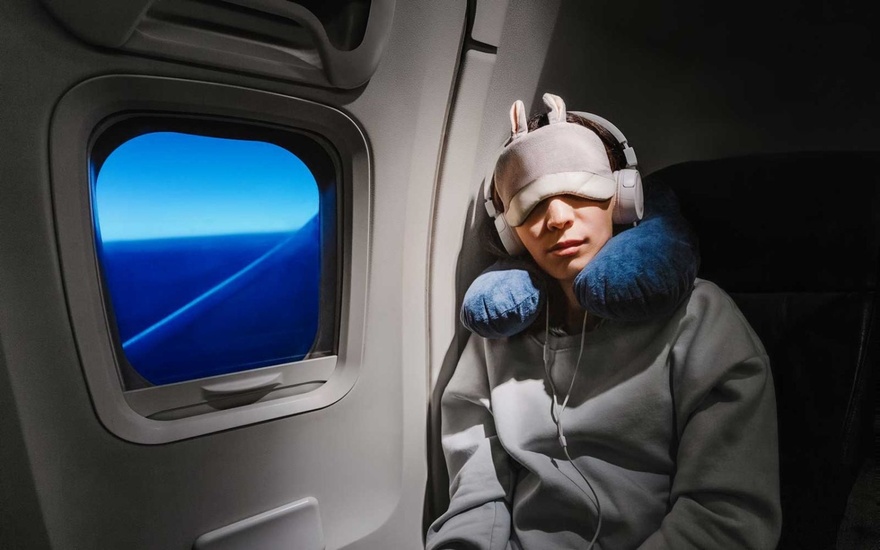
Additional Strategies for Beating Jet Lag
1. Hydration
Staying well-hydrated is crucial for mitigating the symptoms of jet lag. Dehydration can exacerbate feelings of fatigue and discomfort. Drink plenty of water before, during, and after your flight. Avoid excessive alcohol and caffeine, as they can lead to dehydration and disrupt your sleep.
2. Sleep Management
- Sleep Before Travel: Try to get a good night’s sleep before you travel. A well-rested body can better handle the disruptions caused by jet lag.
- Post-Arrival Sleep: Once you arrive at your destination, resist the urge to take long naps during the day. Instead, try to stay awake until the local bedtime to quickly adjust your sleep schedule.
3. Diet and Eating Patterns
- Meal Timing: Eat meals according to the new time zone to help shift your internal clock. Consuming meals at the local meal times can signal to your body that it’s time to adjust.
- Healthy Eating: Avoid heavy, rich, or spicy foods that can disrupt your digestion and exacerbate jet lag symptoms. Opt for light, balanced meals.
4. Physical Activity
Engaging in light physical activity upon arrival can help boost your energy levels and promote better sleep. A walk or gentle exercise in natural light can assist in resetting your internal clock.

Conclusion
Jet lag can be a challenging hurdle for travelers, but by understanding and managing light exposure, you can significantly ease its effects. Start adjusting your sleep schedule before your trip, manage your light exposure during the flight, and adopt healthy habits to support your body’s adjustment to the new time zone. Hydration, sleep management, and physical activity also play important roles in reducing jet lag symptoms.
With these strategies, you can make your travel experience more enjoyable and minimize the discomfort of jet lag, allowing you to fully enjoy your destination from the moment you arrive.
Brittany Cartwright Tells Ex Jax Taylor Not to Kiss Son Cruz, 4, After He Spends the Night with ‘Disgusting’ Girl
Nurse Secretly Told Me to Look Under My Husband’s Hospital Bed – What I Found There Made Me Call the Police
Valerie Bertinelli still has regrets after listening to Eddie Van Halen’s last words to her
Michelle Obama Breaks Her Silence on Why She Skipped Trump’s Inauguration — and the Moment She Made the Decision
